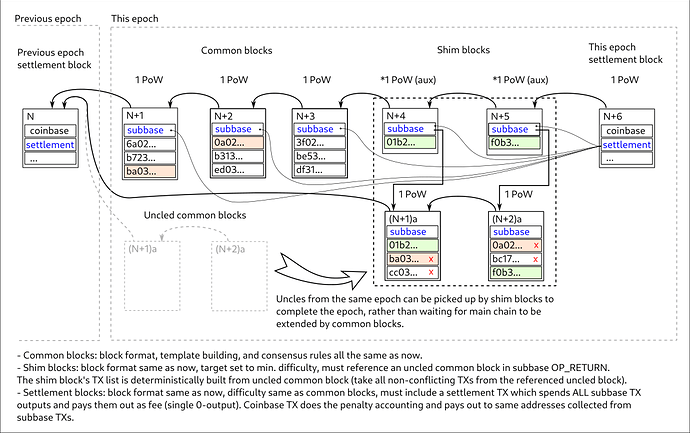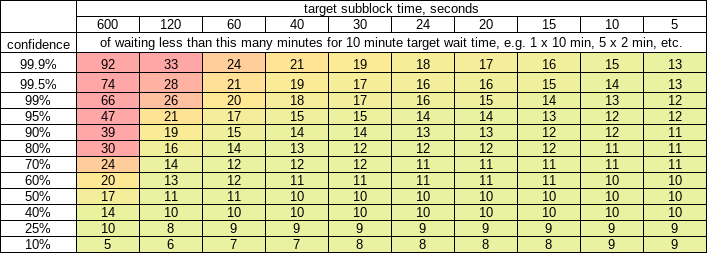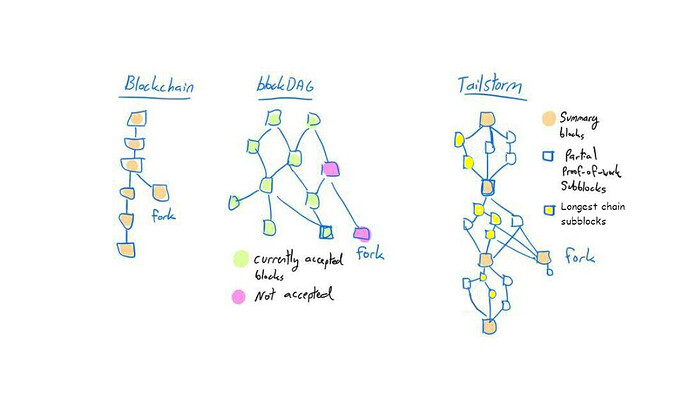It’s the same structure, a chain of blocks, I call it “sub” here just to better map it to the version where subs are “inside” the summary. Here they’re “outside” as if just forming a lower block time chain, and the summary is a block just like them except that it serves as epoch marker and it is restricted from having siblings. IDK what would work better, to have PoW and TXs in the marker, or to have it be an empty 0-PoW with just coinbase in it, deterministically generated from blocks between itself and the previous marker.
Yes and yes, question is how to best implement this in a way that doesn’t break non-upgraded software. My intuition is that it can be implemented in a nice and clean way. We want this to look just like the network did nothing else but reduce block time.
Depends on the penalty scheme, not so much on how we structure the epoch’s data. This is still Tailstorm mechanics. It improves things for those who’d otherwise have their blocks orphaned, but in absence of block reward you’d still have selfish mining. The fee splitting idea might improve that aspect, I don’t know, my intuition is that it would, but intuition can be wrong so we’d have to analyze this somehow.
Sure, say we’re 1 block short of having enough “subs” for a summary, and some uncle block just got announced. Imagine you’re a 30% miner, do you ignore the new sub and try to extend the “main” chain? No. Because you don’t know what other miners are doing. If you spend hash on that, while they include the sub and spend hash on summary, they can reorg you and you lose 1/K reward.




